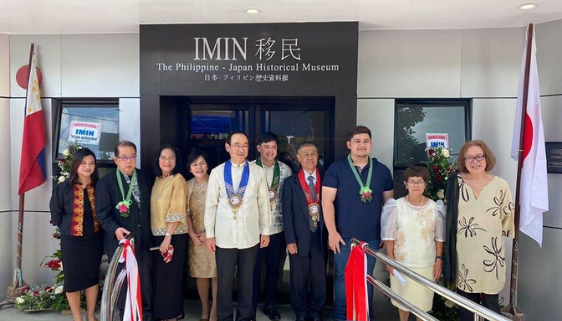
The Philipine-Japan Historical Museum of the Philippine Nikkei Jin Kai, Inc. in Calinan was reopened last January 23, Thurday, after going through a major renovation and enhancement for almost a year.
Now dubbed as IMIN, a Japanese word which means Migration, the museum lives on to tell the story of how the Japanese came to Davao and how their community had left a great impact in the development of Davao at the turn of the 20th century. The museum will transport you once more to 1903, the year when the Japanese arrived in Davao in a quest for a better life. Traces of how the Japanese persevered, hustled against poverty, and finally lived their dreams are made tangible once more in the museum. Likewise, it reminds one of the destruction brought about by war and shattering countless noble dreams but then again, it also reveals the beauty of how life goes on and to emphasize that darkness won’t last forever.
“We dedicate our museum to the Iminsha, our Japanese forefathers whose resilience and industry helped, to a great extent, in the progress and development of Davao City. We also hope that the present and future generations will be find our museum to be an exciting place of learning our history,” said Philippine Nikkei Jin Kai Chairman Ines Mallari during the opening ceremony.
Members of the curation team include Dr. Id Acaylar as the adviser and with PNJK President Antonina Escovilla, Carmen Apigo, and Karina Melissa Cadiogan. Nihongo teachers from PNJK Shigeo Kaneko, Takakazu Machida, and Toru Kishi translated the texts and narratives into Nihongo. Charisse Puentespina created the amazing interiors.
IMIN was made possible by the Grassroots Grant of the Japanese Government. H.E. Ambassador Koji Haneda flew all the way from Manila to attend the ceremony. Japanese Consul General Yoshiaki Miwa was also present, together with Local Government officials, including Councilors Augusto Javier Campos (representing Mayor Sara Duterte), Alberto Ungab, and Mr. Rodrigo Duterte, II.

